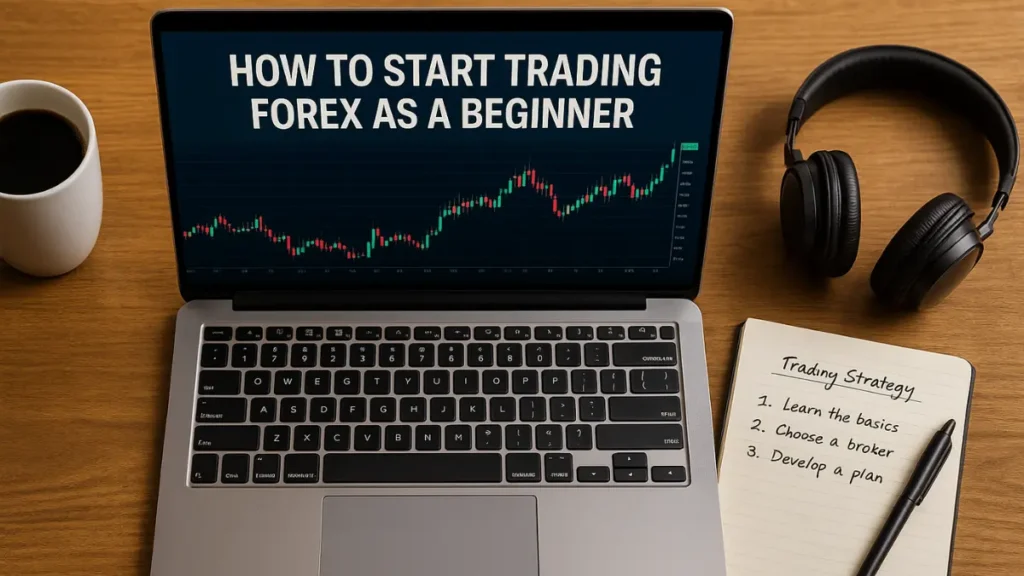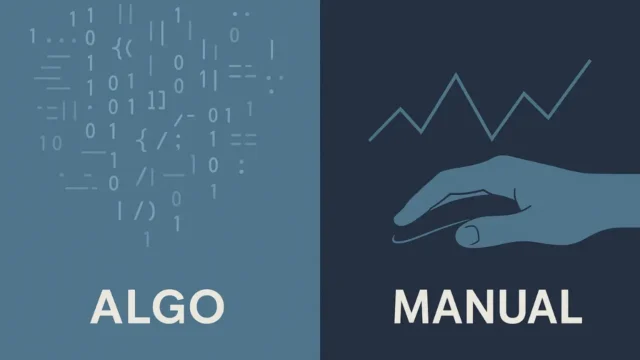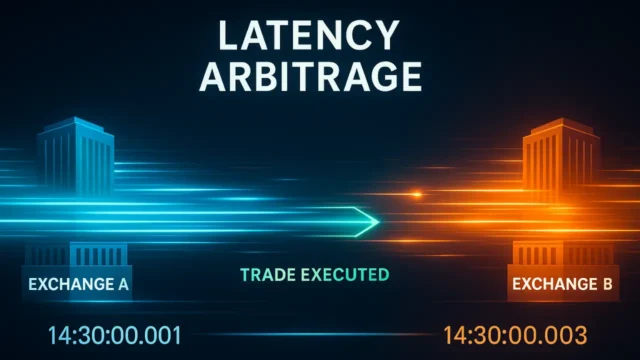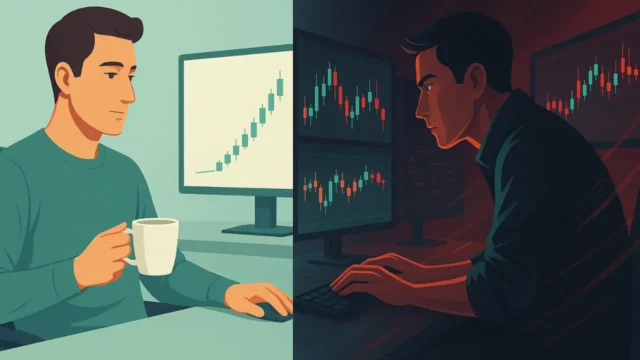Follow Us
How to Start Forex Trading as a Beginner

Table of Contents
- 1. Understand the Basics of Forex Trading
- 2. Learn What Moves the Forex Market
- 3. Choose a Reputable Forex Broker
- 4. Set Up Your First Trading Environment
- 5. Build Your Own Beginner Trading Strategy
- 6. Learn Risk Management Early
- 7. Start Small: Go Live with Discipline
- 8. Common Pitfalls Beginners Must Avoid
- 9. Continuing Education & Staying Updated
Why Forex Trading Appeals to Beginners
Ever wondered what it takes to trade in the largest financial market in the world? With over $7 trillion traded daily, the forex market; short for foreign exchange, attracts millions of new traders each year.
Its 24 hour accessibility, high liquidity, and low barriers to entry make it incredibly appealing, especially to beginners seeking financial freedom or a side hustle.
But, confusing terms like pip, leverage or spread can trip up the newcomers.
That’s why this guide is here, to help you start trading forex confidently.
Key Takeaways
- Understand how forex trading works, including currency pairs and what moves them.
- Learn how to choose a secure, beginner-friendly broker with demo account access.
- Master risk management techniques like the 1% rule and stop-loss orders.
- Follow a clear roadmap to setting up your first forex trade.
- Avoid emotional trading and common mistakes that sabotage beginners.
1. Understand the Basics of Forex Trading
Before placing your first trade, you need to grasp what forex actually is.
Forex trading involves buying one currency while simultaneously selling another. These are traded in pairs, like EUR/USD or GBP/JPY.
The first currency is the “base” and the second is the “quote.” If EUR/USD = 1.1000, it means one Euro equals 1.10 U.S. dollars.
There are three main types of currency pairs:
- Major Pairs: Most traded, like EUR/USD or USD/JPY.
- Minor Pairs: Non-USD pairs like EUR/GBP.
- Exotic Pairs: Involving emerging markets like USD/TRY.
You will also encounter these key terms:
- Pip: The smallest price movement (usually 0.0001 for most pairs).
- Lot: Standard trade size (1 lot = 100,000 units), but you can trade micro lots (1,000 units) as a beginner.
- Leverage: Borrowed capital; can amplify profits and losses.
- Spread: The difference between buy and sell price; the broker’s “fee.”
Understanding these basics gives you a foundation. You don’t need to be perfect, just consistent and informed.
Related Post:
How to Start Trading Stocks as a Beginner: Easy Steps for Beginners
2. Learn What Moves the Forex Market
Currencies don’t move randomly. They react to economic data, central bank policies, and geopolitical news.
Here are some key market drivers:
- Interest Rates: If a country’s central bank raises rates, its currency often strengthens.
- Inflation Reports: High inflation can weaken a currency.
- Unemployment Data: Lower jobless rates usually support a stronger economy and currency.
- Political Instability: Wars, elections, or even rumors can trigger massive volatility.
Technical vs. Fundamental Analysis
- Technical Analysis studies price charts and indicators like RSI or MACD to find patterns.
- Fundamental Analysis examines economic events and long-term trends.
Both are valuable, but beginners often find technicals easier to start with.
3. Choose a Reputable Forex Broker
Not all brokers are created equal. Some operate in shady jurisdictions, while others are fully regulated and transparent.
Here’s what to look for:
- Regulation: Ensure your broker is licensed (e.g., by FCA, ASIC, or CFTC).
- Low Spreads & Fees: Tight spreads = lower costs per trade.
- Leverage Settings: Stick to 10:1 or 20:1 at most while learning.
- Platform Options: Popular ones include MetaTrader 4, MetaTrader 5, and TradingView.
- Demo Account Access: Crucial for practicing without risk.
Search for real user reviews on forums like Reddit or Trustpilot before committing.
4. Set Up Your First Trading Environment
Once you pick your broker, it is time to set up your workspace.
Steps to Get Started:
- Open an Account: Complete KYC (Know Your Customer) with ID and proof of address.
- Choose Your Base Currency: Most beginners use their local currency.
- Select Leverage: Start with the lowest setting available.
- Download Trading Platform: Customize your charts with indicators and templates.
- Create a Watchlist: Focus on 2–3 major pairs like EUR/USD or USD/JPY.
- Practice in Demo Mode: Trade as if it’s real money for at least 1–2 weeks.
This setup stage is often overlooked, but it sets the tone for your trading discipline.
5. Build Your Own Beginner Trading Strategy
Don’t try to mimic professionals or chase internet shortcuts, trading success starts with a plan you understand, trust, and refine.
Try to build a simple, repeatable approach that fits your learning style, schedule, and emotional strengths.
Start by Studying What Works
- Research common beginner strategies: look into price action, moving averages, support/resistance, etc.
- Observe what appeals to you and aligns with how much time you want to spend trading (e.g., day vs swing trading).
Test and Track
- Use a demo account to test your ideas in real market conditions.
- Keep a trading journal where you record:
- Why you entered the trade
- What the outcome was
- What you felt during the trade
- Over time, this will reveal what works best for you and what consistently fails.
Build From Real Data
As you test and log your trades, you will start to see patterns: setups you understand, mistakes you repeat, emotional triggers you face.
This is where your personal trading system begins to form not from copying, but from real feedback.
Tip: A winning strategy is less about complexity and more about clarity, consistency, and confidence. Don’t just follow signals, build understanding.
6. Learn Risk Management Early
If there is one skill that separates long-term winners from losers in forex, it’s risk management.
You might get lucky once or twice, but without protecting your capital, you won’t survive long.
Here’s how to manage risk like a pro:
- Risk Only 1–2% Per Trade: If your account has $1,000, don’t risk more than $10–20 on any single trade.
- Use Stop-Loss Orders: Always decide in advance how much you’re willing to lose on a trade. A stop-loss closes the trade automatically if price hits that level.
- Set Take-Profit Levels: Don’t get greedy, set a reasonable profit target and stick to it.
- Never Trade Without a Plan: Guessing = gambling. You want to be a strategic decision-maker, not a hopeful speculator.
Why it Matters
Imagine making a series of small, controlled losses but catching a few strong trends. With smart risk rules, your winning trades will outweigh your losing ones, this is the foundation of consistency.
7. Start Small: Go Live with Discipline
You have practiced in a demo account. Now it’s time to go live, but carefully.
Here’s how:
- Start with Micro-Lots: This keeps your real-money exposure low while you adjust emotionally.
- Use the Same Strategy as Demo: Don’t abandon your system just because real money is involved.
- Limit Yourself: One or two trades a day max, quality over quantity.
The Emotional Side
Live trading feels different. Even a $1 profit or loss can trigger panic or overconfidence. That’s normal.
Track your emotions just like you track trades. Learn to recognize patterns like fear, greed, or hesitation.
Your first goal should NOT be making money. It should be executing your plan flawlessly 10–20 times in a row.
8. Common Pitfalls Beginners Must Avoid
Even with all the knowledge in the world, it’s easy to fall into emotional traps. Here are the top trading mistakes beginners make and how to dodge them:
- Overtrading: More trades ≠ more profits. It often leads to burnout and poor decisions.
- Revenge Trading: Lost a trade? Don’t try to “win it back” with bigger, riskier bets.
- Ignoring the News: Forex is global. Events like rate changes or geopolitical shocks can explode volatility.
- Trading Without a Stop-Loss: That’s like driving without brakes.
Beware of Signal Sellers & Gurus
No one can predict the market perfectly. Avoid Telegram signals, “get rich quick” courses, and anyone promising guaranteed profits.
9. Continuing Education & Staying Updated
Here’s how to keep growing:
- Read Daily Forex News: Sites like ForexFactory, DailyFX, or Investing.com.
- Watch YouTube Experts: Channels like Rayner Teo or The Secret Mindset
- Join Communities: Subreddits like r/Forex or BabyPips forums are goldmines for advice and feedback.
- Practice Backtesting: Use software like TradingView to test your strategy on past data.
Record yourself talking through your trades. This can help you spot emotional patterns and decision flaws you wouldn’t notice otherwise.
Conclusion: Your First Steps in Forex Trading
Forex trading can seem overwhelming, but with the right roadmap, it becomes a skill you can master over time.
You don’t need to predict the market, you need to manage risk, stick to a simple strategy, and keep learning.
Your next step? Open a demo account with a trusted broker and test your knowledge from this guide. Start small, stay disciplined, and avoid the emotional traps.
FAQs
What’s the minimum to start trading forex?
Many brokers let you start with as little as $10, but $200–$500 is more realistic for testing strategies and managing risk.
Is forex trading legal and safe?
Yes, if you use a regulated broker and follow proper risk management. Avoid offshore or unlicensed platforms.
How long does it take to become profitable in forex?
With consistent practice and learning, most traders take 6–12 months to become consistently profitable. There’s no shortcut.
Do I need a mentor or course to learn forex?
No, but the right mentor or course can speed up your learning. Resources like BabyPips are great starting points.
Disclaimer:
This content is for informational purposes only and should not be considered financial advice.
Read full Disclaimer.




